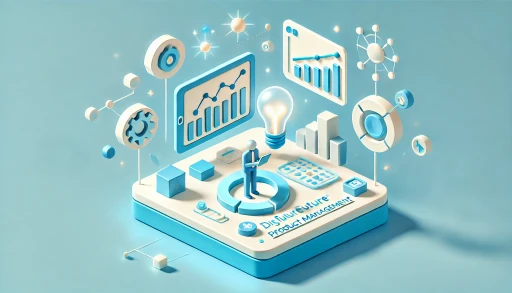Digital Product Manager Job Description

The role of the Digital Product Manager (PM) is more critical than ever. Digital Product Managers are responsible for the end-to-end lifecycle of digital products, from design to launch and beyond. They bridge the gap between business objectives and technical implementation, ensuring that the product meets user needs while aligning with the company’s strategic goals. This blog post will cover the key responsibilities, skills, and tools that define a successful Digital Product Manager.
What is a Digital Product Manager?
A Digital Product Manager is a professional who oversees the development and management of digital products such as websites, mobile applications and software solutions. They work closely with cross-functional teams including marketing, sales, design and development to ensure the product’s success in the market.
Key Responsibilities of a Digital Product Manager
- Product Strategy and Vision
- Define the product vision and strategy.
- Align the product roadmap with business goals and market demands.
- Conduct market research to identify opportunities and customer needs.
- Product Development and Management
- Collaborate with designers and developers to create user-centric products.
- Use project management tools like Kanban boards and project tracking software to manage tasks.
- Prioritize features and functionalities based on user feedback and business impact.
- Stakeholder Management
- Communicate with stakeholders to gather requirements and provide updates.
- Work with marketing and sales teams to develop go-to-market strategies.
- Ensure alignment between different teams to achieve product goals.
- Performance Monitoring and Improvement
- Track product performance using analytics tools.
- Implement changes to improve work performance and productivity.
- Use A/B testing and user feedback to make data-driven decisions.
Essential Skills for a Digital Product Manager
- Analytical Skills
- Ability to analyze market trends and user data.
- Proficiency in using project management software to track and manage tasks.
- Communication Skills
- Effective communication with cross-functional teams.
- Ability to convey technical concepts to non-technical stakeholders.
- Technical Skills
- Understanding of software development processes.
- Familiarity with tools like Kanban, Scrum, and project management software.
- Leadership Skills
- Ability to lead and motivate teams.
- Decision-making skills to prioritize tasks and resources.

Tools and Techniques for Digital Product Managers
- Project Management Software
- Utilize software to manage projects and tasks efficiently.
- Popular tools include Peerbie, Trello, Jira, and Asana.
- Free project management software options are available for startups and small businesses.
- Agile Methodologies
- Implement Agile practices such as Scrum and Kanban to enhance productivity.
- Use Kanban boards to visualize tasks and improve workflow.
- A Scrum Master can help facilitate the Agile process and ensure team collaboration.
- Market and User Research
- Conduct surveys and focus groups to gather user insights.
- Analyze market trends to stay ahead of the competition.
- Use business definition models to understand and define the target market.
- Performance Metrics
- Track key performance indicators (KPIs) to measure success.
- Use analytics tools to monitor user behavior and product performance.
- Implement a project tracking software to keep an eye on deadlines and deliverables.

How to Improve Work Performance as a Digital Product Manager
- Time Management
- Use calendars and scheduling tools to organize your tasks and meetings.
- Set clear priorities to focus on high-impact activities.
- Team Collaboration
- Foster a collaborative environment where team members can share ideas and feedback.
- Utilize project management tools to streamline communication and task assignments.
- Continuous Learning
- Stay updated with the latest industry trends and best practices.
- Attend workshops, webinars, and conferences to enhance your skills.
- Feedback and Adaptation
- Regularly seek feedback from users and stakeholders.
- Be open to change and adapt your strategies based on feedback and performance data.

The Future of Digital Product Management
As technology continues to evolve, the role of the Digital Product Manager will change. The integration of Artificial Intelligence (AI) and machine learning into product management processes can significantly improve decision-making and efficiency. Digital Product Managers will need to keep up with these developments to maintain a competitive advantage.
- AI and Automation
- Use AI to analyze large datasets and gain insights into user behavior.
- Implement automation tools to streamline repetitive tasks and improve productivity.
- Enhanced User Experience
- Leverage AI to personalize user experiences and increase engagement.
- Use data-driven approaches to continuously improve the product based on user feedback.
- Market Expansion
- Explore new markets and expand the product’s reach.
- Adapt the product to meet the needs of diverse user groups.
The role of a Digital Product Manager is multifaceted, requiring a blend of strategic vision, technical knowledge, and leadership skills. By leveraging the right tools and methodologies, Digital Product Managers can drive product success and improve overall productivity at work. As digital products continue to evolve, the demand for skilled Digital Product Managers will only grow, making it a rewarding career path for those with the right skills and mindset.
By understanding the responsibilities and skills required for a Digital Product Manager, businesses can better define this important role and ensure their digital products meet the needs of their users while achieving business goals. Whether you’re looking to hire a Digital Product Manager or step into the role yourself, this guide provides a comprehensive overview to help you succeed.

